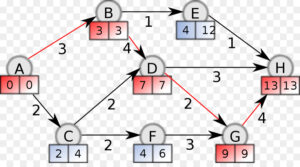In one of my earlier posts, I have tried to clarify the difference between strategic procurement and procurement strategy. But after some time, I figured out that the “one size fits all” procurement strategy is not applicable everywhere. Sometimes we have to go with multiple strategies.
The problem
A big part of this comes from previous experiences. For reasons you can understand, I cannot go into details. So, let us work on a hypothetical case. A hotel that does additional outdoor events on demand. And all aspects of its smooth operation are managed in-house.
We could broadly split all operations into three main groups:
The facility (the hotel building)
Either due to lack of specialists within the organization or legal requirements (pest control or firefighting) you need to engage special services providers on an annual contract. Those are very technical and specialized services. Here we will include repairs of the systems that are a part of the building, like HVAC, security cameras, lifts etc.
Kitchen and cleaning
Here we have very repetitive and regular requirements. Those are items we need every day for a smooth operation. But here the stakeholder is different. They usually know more than our buyers about the product. They want the best to be able to do their job easy and of high quality. And the management expects cost saving here, as those are usually the majority of the operating costs.
Events
A rich businessman wants to have a 100-person party in the desert, with fresh shrimps and barbecue. When? Tonight, of course. The procurement team has a whole 4 hours to get all the missing items. Money here is not an issue. Those events are done with high-profit margins. What is required here is speed to deliver. In my career, I had to deliver sushi and sashimi at 6 am and gluten-free bread from a specific shop 30 kilometres away. Every one of those requests yielded a great profit.
As you can see, we cannot use one approach. And even the same buyer may do very good in one of the mentioned groups, but is not able to manage the second group.
Let us try to present this approach visually:

So, for maintenance, we need someone who is precise and has technical knowledge. He also needs to be a very good negotiator, as those contracts are of high value. And this is maintenance, hence plain cost. The Management wants to get here the required service at the lowest possible price.
The buyer dealing with regular deliveries must know its market in and out. Usually, this category has a broad range of vendors. Also, many brands and qualities are available. He needs to know what is going on, what is new and to work closely with the stakeholder.
And the last buyer is the one who brings the company a “quick buck”. You must have absolute trust in him, as he will handle cash, small shops and traders. And there is no way to control him, as otherwise, he will not be able to finish his task on time. His job is not to research and negotiate. He has only one goal: get it done on time!
The procedures
Procedures are usually done to cover the “regular” procurement. Hence, if you have a setup like the one in this article, you will violate it frequently. Create specific SOPs for different scenarios. Define what triggers the particular SOP. Is it the customer, a direct request from a higher Manager or something else? And create a doable process.
I am always saying that the written process must be followed. At the moment we are forced to cut corners to get the job done, it is time to review the process.
So, this is the story. And one possible solution. It may or may not be the right one. Just remember, sometimes there is no single solution for a problem. And sometimes, we need to split the problem into smaller chunks. As the saying goes:
“How to eat an Elephant?”
“One bite at a time”


